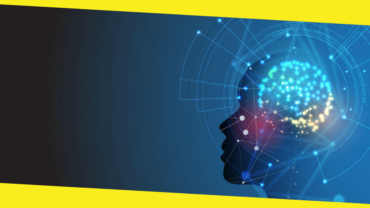10 Programming Language Trends Coders Should Stay On Top of
This post was last updated on March 11th, 2025

Programming languages are the building blocks of software development. They are the tools that developers use to create and bring ideas to life. With new technologies emerging every day and new development methodologies gaining popularity, it’s essential for coders to stay on top of the latest programming language trends.
In this article, we’ll be discussing ten programming language trends that coders should be aware of.
Trend 1: Rise of Low-Code/No-Code Development Platforms
Low-code and no-code development platforms have revolutionized the way software is developed. With low-code and no-code, developers can quickly create applications without writing a single line of code. Low-code platforms provide a visual interface for developers to build applications, reducing the amount of code needed to get the job done. No-code platforms take it a step further, allowing developers to build applications without writing any code at all.
The benefits of low-code and no-code are numerous, including faster time-to-market, reduced development costs, and increased collaboration between non-technical and technical teams. Some popular low-code/no-code platforms include OutSystems, Mendix, and Salesforce Lightning.
Trend 2: Adoption of Python in Enterprise Applications
Python has been one of the most popular programming languages for several years, and its popularity continues to grow, especially in the enterprise. One of the key factors contributing to the popularity of Python is its versatility, as it can be used for a wide range of tasks, from data analysis and visualization to machine learning and web development.
Python has a clean and concise syntax, which makes it easy for coders to read, write, and understand. As a result, it has become popular in large organizations looking to develop and launch enterprise applications quickly. This growing demand for Python skills has led to a proliferation of free coding classes online, such as those offered by Bay Valley Tech, which can help coders to acquire the skills and knowledge they need to work with Python. It has made it easier for coders to get started with Python and has also helped to address the shortage of skilled Python developers, which has been a major challenge for many organizations.
Some examples of successful enterprise applications built using Python include Dropbox, Spotify, and Netflix.
Trend 3: Growth of Artificial Intelligence and Machine Learning
Artificial Intelligence (AI) and Machine Learning (ML) are transforming the world of software development. With AI and ML, developers can build applications that can learn, reason, and make decisions. This opens up new opportunities for developers to create more sophisticated and intelligent applications.
Some popular AI/ML frameworks that coders should be familiar with include TensorFlow, PyTorch, and scikit-learn.
Trend 4: Increased Demand for Cloud Native Development
Cloud native development is a software development approach that takes full advantage of cloud computing resources and services. Cloud native development enables developers to build, test, and deploy applications more quickly and at scale.
The benefits of cloud native development are many, including increased agility, scalability, and cost savings. Some popular cloud native development tools and platforms include Kubernetes, Docker, and AWS.
Trend 5: Trending Front-End Frameworks
Front-end frameworks are collections of pre-written code developers can use to build user interfaces. They provide a foundation for building applications, making it easier for developers to focus on writing code that is specific to their applications.
Some popular front-end frameworks include React, Angular, and Vue.js. With the rise of cloud native development and the need for more sophisticated user experiences, front-end frameworks are becoming increasingly important.
Trend 6: Emergence of New Languages
As technology continues to evolve, new programming languages are emerging designed to meet the specific needs of new technologies. These new languages offer new opportunities for developers to create more efficient, scalable, and secure applications. Some emerging programming languages to keep an eye on include Kotlin, Rust, and Swift.
Trend 7: Adoption of Containerization and Microservices
Containerization and microservices are two software development approaches that are gaining popularity. Containerization involves packaging an application and its dependencies into a single, isolated package called a container. This makes it easier for developers to deploy, test, and run applications, regardless of the underlying infrastructure. On the other hand, Microservices involve breaking down a large, monolithic application into smaller, independent services that can be developed, tested, and deployed independently.
The benefits of containerization and microservices include increased scalability, resilience, and agility. Popular tools for containerization include Docker and Kubernetes, while popular microservices frameworks include Spring Boot and Node.js.
Trend 8: Emphasis on Data Privacy and Security
With the increasing amount of sensitive data being collected and stored by organizations, there’s a growing emphasis on data privacy and security. As a result, developers need to be well-versed in secure coding practices and be familiar with the latest security technologies. Some important topics in this area include encryption, secure communication, and access control.
Trend 9: Adoption of DevOps Practices
DevOps is a software development approach focusing on collaboration between developers and operations teams. DevOps aims to improve the speed and reliability of software delivery while also reducing costs. Some popular DevOps tools include Ansible, Chef, and Puppet.
With the increasing emphasis on agile and continuous delivery, DevOps practices are becoming more important.
Trend 10: Growth of Blockchain Development
Blockchain technology has gained significant attention in recent years, and its applications go beyond just cryptocurrencies. It’s a decentralized, secure, and transparent system that enables secure transactions and data sharing without the need for intermediaries. The growth of blockchain development is driven by its potential to revolutionize various industries, from finance and banking to supply chain management and healthcare.
One of the key benefits of blockchain development is its security. With blockchain, data is stored in multiple nodes, making it very difficult for cybercriminals to access and manipulate. Additionally, the decentralized nature of blockchain ensures that all transactions are transparent and can be easily audited. This makes it an attractive solution for businesses and organizations that need to manage and track sensitive data securely. Examples of popular blockchain development platforms include Ethereum, Hyperledger, and EOS.
Conclusion
The world of software development is constantly changing, and it’s essential for coders to stay on top of the latest programming language trends. This article discusses eleven trends that coders should be aware of. By staying on top, coders will be well-equipped to take advantage of new opportunities and tackle new challenges in the world of software development.
Recommended For You
What Are The Prerequisites To Learn Artificial Intelligence
Most Inside
Most Inside offers high-quality recommendations and valuable updates to enhance all aspects of your life, providing premium guidance and enriching experiences.




